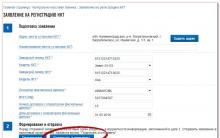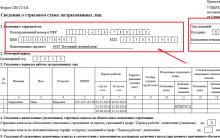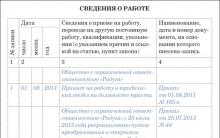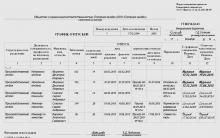Salary is the remuneration that an employee of a company receives in exchange for their work. Article 57 of the Labor Code of the Russian Federation says that the amount of remuneration and the method of its formation are necessary conditions for an employment contract.
When calculating wages, the procedure for remuneration established at the enterprise, as well as additional incentives and compensations, is taken into account. They can be established by law, for example, compensation for work in hazardous working conditions, or accepted by the organization on its own (additional payments for seniority, bonuses for meeting financial performance, etc.). Also, the calculation takes into account various penalties, deductions from wages and.
The monthly amount of earnings cannot be lower than the minimum wage.
Existing calculus systems
Meet two payment systems salary: 
- Time. In this case, the calculation takes into account the days or hours actually worked by the employee in the month and his salary (tariff rate). The monthly official salary is set for the employee, according to the staffing table. Typically, this form of remuneration occurs with specialists and managers. The tariff rate can be hourly or daily. In addition to the simple form, there is time-bonus wages. In addition to the basic salary, a bonus is paid. The amount of the bonus is indicated in the labor or collective agreements or other regulatory documents and is a certain percentage of the salary (tariff rate).
- piecework. It is designed to increase the productivity of workers, as a rule, it is used in the manufacturing sector. There are several varieties of this system:
- Straight. In this case, the monetary reward is determined based on the quantity of products produced and piece rates per unit of output. Piece rates are developed by the organization, based on production standards and established hourly rates;
- Piecework premium ;
- piece-progressive . Prices increase when working out above the established standard;
- Indirect . It is calculated as follows: the salary of one category of employees, usually service personnel, depends on the amount of remuneration of workers in the main production.
 The main document for calculating time earnings is, which sets the monthly rate in days and hours and notes the actual hours worked separately for each employee of the company.
The main document for calculating time earnings is, which sets the monthly rate in days and hours and notes the actual hours worked separately for each employee of the company.
If the employee has worked the entire month, he receives the full salary. In other cases, earnings are calculated according to formula:
salary / standard days * number of days worked
For example: according to the production calendar for 2015, December has 23 working days. The secretary of the head was given a salary of 28,900 rubles, the number of days worked in December was 18. We get: 28,900 rubles. /23 days x 18 days = 22,617.39 rubles.
Now suppose that the secretary is also entitled to a bonus in addition to the salary. Its size is 10% of the salary. According to the above data, the salary of the secretary in December will be 24,879.13 rubles. (22,617.39 rubles + (22,617.39 rubles x 10%)).
 Formulas for calculating piecework wages differ depending on the type:
Formulas for calculating piecework wages differ depending on the type:
- Direct piecework: quantity of goods produced x unit cost of production.
For example: the following piece rates are provided at the factory: for processing a part - 45 rubles, for assembling a part - 95 rubles. The worker assembled and processed 243 parts in a month, his salary will be: (243 pieces x 95 rubles) + (243 pieces x 45 rubles) \u003d 34,020 rubles. (23,085 + 10,935); - Piecework premium. In this case, the calculation is made according to the same formula with the addition of a premium.
Suppose, in our case, the premium is 10% of the piecework salary, we get: 34,020 rubles. + (34,020 rubles x 10%) = 37,422 rubles; - piece-progressive: (the amount of manufactured products within the norm x payment for a unit of production) + (the amount of manufactured products in excess of the norm * increased payment for a unit of production).
Example: the norm of processed parts is 280 pieces, the piece rate is 50 rubles, the increased piece rate is 75 rubles. A worker processed 500 parts per month: (280 pieces x 50 rubles) + (220 pieces x 75 rubles) \u003d 30,500 rubles. (14,000 + 16,500); - Indirect. There is no single calculation formula, the organization can develop it independently at its discretion. It can be tied to the volume of production, the wages of workers in the main production, or calculated using special coefficients.
For more information on some of the complexities of payroll, see the following video:
If you have not yet registered an organization, then the easiest this can be done using online services that will help you generate all the necessary documents for free: If you already have an organization and you are thinking about how to facilitate and automate accounting and reporting, then the following online services come to the rescue, which will completely replace an accountant at your plant and save a lot of money and time. All reporting is generated automatically, signed with an electronic signature and sent automatically online. It is ideal for an individual entrepreneur or LLC on the simplified tax system, UTII, PSN, TS, OSNO.
Everything happens in a few clicks, without queues and stress. Try it and you will be surprised how easy it got!
Holds
Monthly deducted from the salary of each employee. The tax rate is 13%. The amount of tax can be reduced by the amount of tax deductions.
They are:
- Standard: (1400 rubles - the first and second child, 3000 rubles - the third and subsequent), deductions for veterans of the Great Patriotic War, blockade, disabled people of groups I and II and other categories of persons specified in article 218 of the Tax Code of the Russian Federation (500 rubles);
- Property. Have the right to receive persons who have incurred expenses for the construction or acquisition of real estate;
- Social. This includes deductions for treatment, education, voluntary pension provision, etc.;
- Professional. The deductions apply to individuals engaged in private practice and individual entrepreneurs.
Additionally, from the company's own funds, the employer pays to state off-budget funds. In 2015, the total amount of contributions is 30% of the wage fund.
Deductions and collections from the salary of an employee can only be made on grounds provided by law:
- According to the Labor Code (Article 137): for unworked vacation days (upon dismissal), for an unworked advance payment, repayment of overpaid and unused travel expenses, in case of an accounting error (in total, all deductions for a month cannot exceed 20% of earnings);
- According to executive documents (FZ No. 229 dated 02.10.2007): payment of alimony; loan repayment; compensation for moral and physical harm (50-70%).
Payment terms
Wages are paid every two weeks (Article 136 of the Labor Code of the Russian Federation).
The terms of payment are specified in the employment or collective agreements or other regulatory acts of the company. The first part of earnings is paid in the current month, usually before the 25th day and is reflected as an advance. The second part is paid at the beginning of the month following the settlement month.
There is two options advance payments:
- in proportion to the hours worked (for the first two weeks of the month);
- a fixed amount, which is set as a percentage of the monthly salary, for example, 40%.
All retention are made when calculating salaries (nothing is withheld from the advance).
The employer must monthly familiarize the employee with the amount of his salary and its components, as well as with the deductions made and the grounds for this. This must be done in writing, usually a pay slip is used for these purposes.











How to issue a power of attorney to represent the interests of an LLC to an individual?
How to apply for an IP: step by step instructions
Form of power of attorney to receive goods or material assets
The deadline for registering an individual entrepreneur in the tax
Business plan for a law firm: an example with calculations legal support for a business